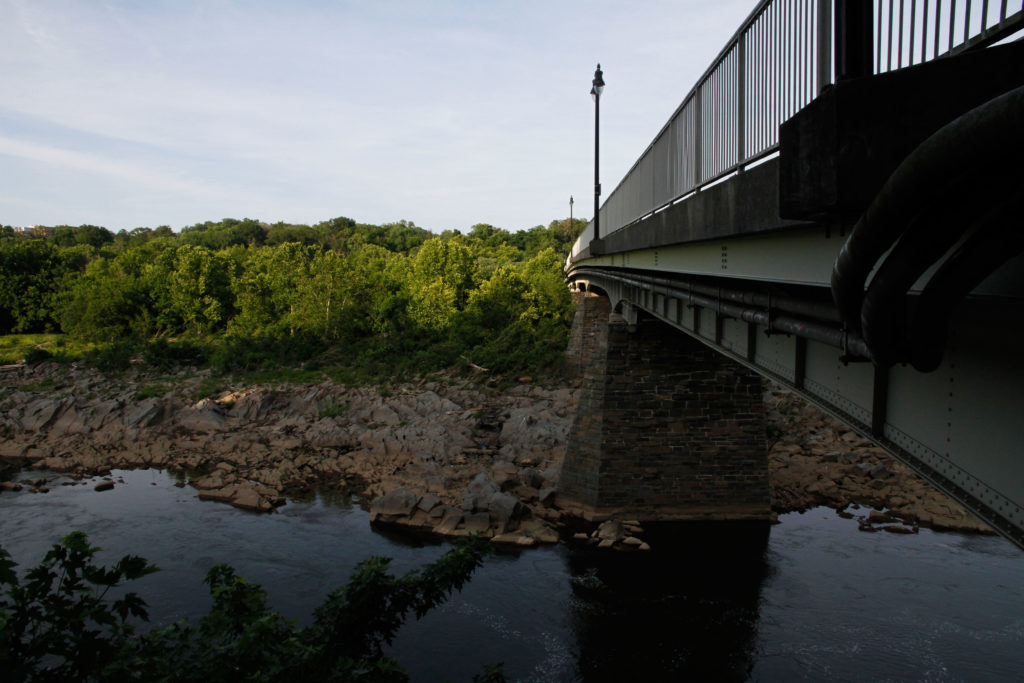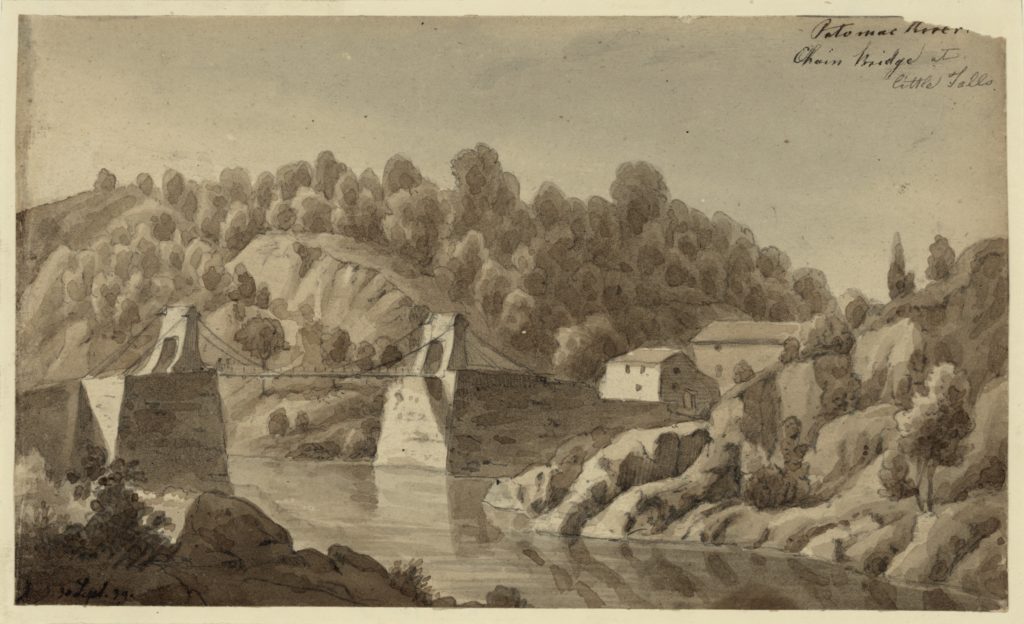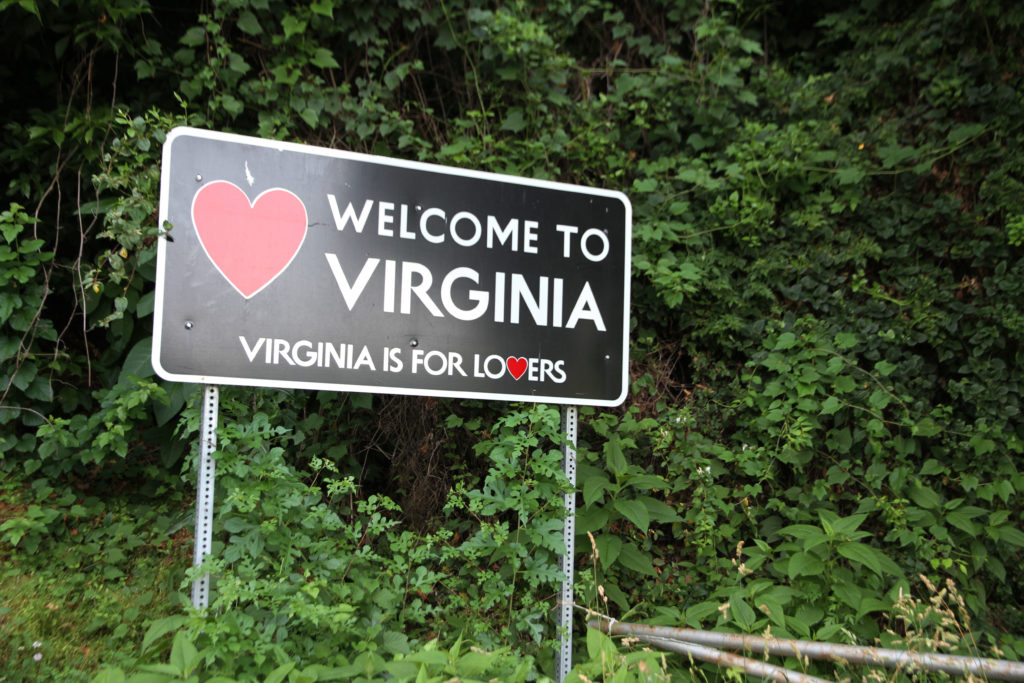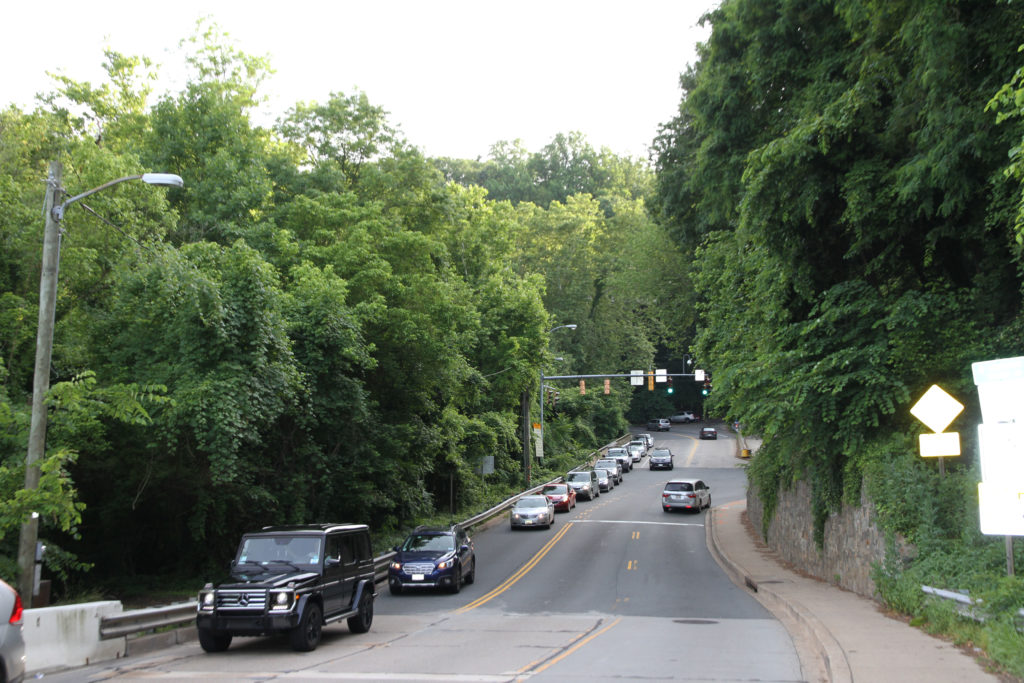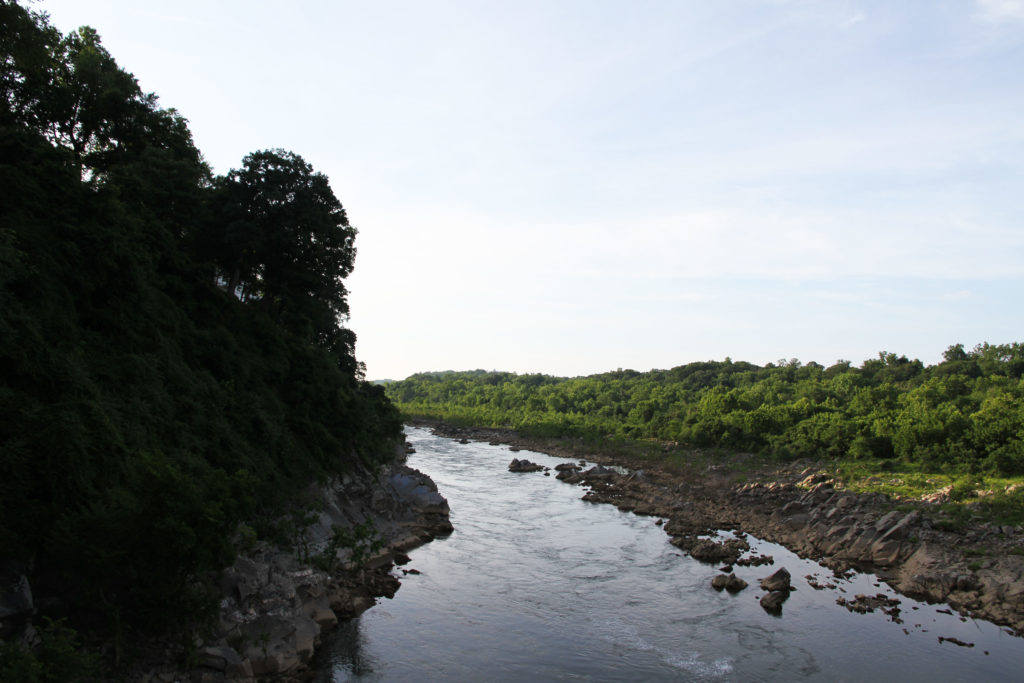Today, Chain Bridge is a sleepy three-lane crossing between Virginia and D.C., but the bridge and its predecessors have played a prominent — if curious — role in the nation’s history.
“Most modern-day Arlington commuters who use Chain Bridge in their daily trek to and from the District would be astonished to learn how prominent the area at Pimmit Run at the Virginia end of the bridge was in the early days of our fledgling country,” Jim Fearson wrote in his “Chain Bridge: A History of the Bridge and Its Surrounding Territory from 1608-1991.”
Long before ferries ran from Virginia to the budding village of Georgetown, there was reportedly an American Indian village at the mouth of the Pimmit Run near Chain Bridge. It was also the furthest point up the river reached by explorer and Disney hero John Smith on his 1608 journey up the Potomac.
A town was planned in 1772 on 100 acres of land on the Virginia side of where the bridge is today. It was to be named Philee after Philip Ludwell Lee, the owner, but the town never materialized.
After the American Revolution, the removal of restraints on trade between states led to an increase in traffic across the Potomac and made a bridge necessary. The first bridge, built in 1797, was tolled — from 3 cents for pedestrians to 25-50 cents for horses and wagons — but ultimately collapsed in 1804 under the weight of a heavy load of cattle.
Another succession of bridges appeared in the 10 years that followed, including a short-lived, single-span suspension bridge from which the bridge derived the name it still holds today.
It was across one of these bridges that, on Aug. 2, 1814, the Declaration of Independence and other national relics were smuggled out of Washington, D.C. during the burning of Washington. They were reportedly hidden in an unoccupied grist-mill on the Virginia side of the river, according to documents in Arlington’s Center for Local History.
Later that month, the papers were moved to Leesburg, where they remained until being brought back to the city following the departure of the British navy.
The Virginia side of the bridge was also a popular dueling ground in the early 1800s. A historical marker commemorates the spot where a duel between Secretary of State Henry Clay and Senator John Randolph took place at the Virginia side of the bridge.
Control of the bridge was critical during the Civil War, during which a Union outpost was established on the Virginia side. After the war, the foundations of the outpost would be used as the basis for a casino, beginning the criminal descent of the Virginia side of the Potomac.
During the prohibition era, Fearson said the Virginia side of the bridge became something of a red-light district.
“Local lore had it that the tavern at the end of the bridge was a drop-off point for rum-runners during prohibition,” Fearson said in his history of Chain Bridge. “Supposedly they came up the river and put into Pimmit Run which joins the river directly behind the tavern.”
The bridge was rebuilt a few times throughout the mid-1800s, but by the 1920s heavy auto and truck traffic was starting to put a strain on a bridge built for carriages. Severe weight and speed limits were put into place. Eventually, the strain became too much. Following a flood, in 1939 the bridge as it mostly exists today was built on top of stone piers constructed for the 1850 bridge.
The last building at the Virginia side of the bridge was a service station, which last appeared in a 1955 Arlington County directory. In the early 1980s, the deck of the bridge was rebuilt to increase the width of the roadway by 10 feet, creating the final form of the bridge that is there today.
“A walking trip along the banks of Pimmit Run reveals little of what was there; a few possible foundation stones near the bridge, the early abutment,” Fearson said. “Further upstream the abutment of an early bridge that used to carry Glebe Road over the Pimmit, a large depression and stones that may have been a building site… nothing of substance to indicate more than 200 years of man’s involvement.”


